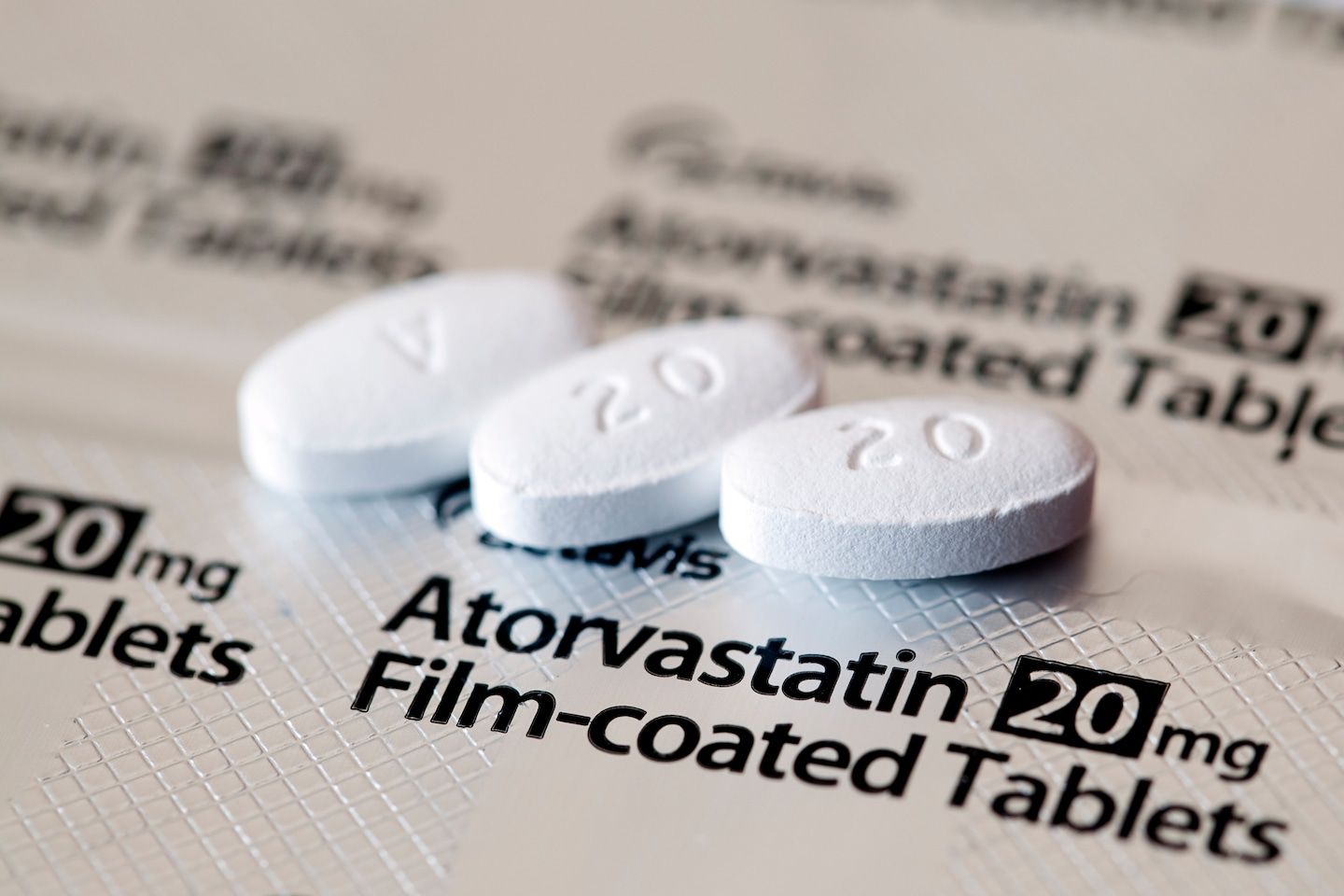When to consider statins for cholesterol, especially as you age
Comment on this story Comment Gift Article Share
Consumer Reports has no financial relationship with any advertisers on this site. Sometimes it may seem as if half the population of the United States takes medication for high cholesterol levels. About 40 million Americans are taking statins such as atorvastatin (Lipitor and generic), lovastatin (Altoprev) and simvastatin (Zocor), which are by far the most commonly prescribed of all types of cholesterol drugs.
Statins can be quite effective. They can lower LDL (“bad”) cholesterol by up to 25 to 55 percent, reduce the levels of blood fats called triglycerides and subdue inflammation — and they could prevent heart attacks and strokes.
But there may be some confusion about when to start on statins, especially among older adults. While we are more vulnerable to heart attacks and strokes with age, data showing that statins reduce such risks are “strongest for adults in their 70s and less clear as adults age beyond 80,” says Daniel Forman, chair of the section of geriatric cardiology at the University of Pittsburgh Medical Center. Concerns about statin side effects also increase with age, he says.
Advertisement
Last year, the U.S. Preventive Services Task Force reaffirmed that not enough evidence exists to recommend — or not recommend — starting statin use in people 76 and older for the prevention of a first heart attack or stroke. “The USPSTF isn’t saying you shouldn’t do it, just that there’s not enough research out there to say definitively that you should,” says Robert Rosenson, director of cardiometabolic disorders at the Icahn School of Medicine at Mount Sinai in New York.
The ideal cholesterol levels for you — and whether you rely on lifestyle measures alone or use medication as well to achieve them — should be personalized, says Ardeshir Hashmi, chief of the Center for Geriatric Medicine at the Cleveland Clinic. “We don’t just automatically make recommendations based on age anymore,” he says. So it’s wise to talk with your doctor about your overall health goals and preferences, as well as the scientific evidence. Here’s the lowdown on cholesterol issues.
What are healthy levels for people in their 70s and 80s?
The numbers that doctors are typically looking for are the following.
Advertisement
Total cholesterol: less than 200 milligrams per deciliter (mg/dL). Cholesterol between 200 and 239 mg/dL is considered borderline; 240 mg/dL or greater is high.
LDL (“bad”) cholesterol: under 100 mg/dL. “If you already have heart disease, your doctors will want to get your LDL below 70,” says Michael Nanna, an interventional cardiologist at the Yale School of Medicine in New Haven, Conn.
HDL (“good”) cholesterol: at least 40 mg/dL, with 60 mg/dL or higher considered excellent.
Triglycerides (which are associated with an increased risk of heart disease): Less than 150 mg/dL is considered within the normal range, with 150 to 499 mg/dL considered mildly increased; 500 to 886 mg/dL, moderately increased; and greater than 886 mg/dL, very high.
Who should start taking medication?
If you are under 75 and have high LDL cholesterol or an elevated risk of heart attack and stroke (due to a combination of risk factors), groups including the American Heart Association recommend a statin to help reduce the likelihood of heart attack and stroke. This is advised whether or not you have heart disease.
The same is true if you’re older than 75 and have been diagnosed with heart disease, Nanna says: “We do know that if you have established heart disease, the evidence is very clear that you do need to be on [statins], including individuals 75 and over.” A study published in the Lancet in 2019, for example, found that statin therapy for people with existing heart disease reduced the risk of heart attack or stroke across all age groups.
What if I’m over 75 and don’t have heart disease?
As with other age groups, a discussion with your doctor is warranted. “If you have other risk factors, such as Type 2 diabetes or an inflammatory condition like rheumatoid arthritis, you’re in a higher risk category, and statins may be something you need to consider with your doctor,” Rosenson says.
Advertisement
Some research suggests that statin use in this age group may be beneficial, such as the study published in 2020 in JAMA of almost 327,000 veterans ages 75 and up. None had diagnosed heart disease at the beginning of the study. The veterans who began taking statins during an average of seven years that researchers followed them were 20 percent less likely to die of heart disease than those who didn’t take statin drugs.
If you’re on the fence, you might ask your doctor for testing that will reveal your cardiac calcium score, says George Fernaine, section chief of cardiology at NYU Langone Hospital-Brooklyn in New York. The higher the score, the more likely it is that you’re developing plaque in the arteries of the heart, “which would be an indication for a stricter diet, exercise, or possibly the addition of medications.”
I started a statin, but it’s not doing enough. Now what?
Depending on your health and reaction to the medications, increasing the dosage may be reasonable. But note that side effects from statins could be more pronounced in older adults taking the highest dosages, Rosenson says. Anyone older than 65 should start with the lowest dosage possible, Hashmi says, in part because “their bodies are less able to metabolize drugs.” Another option, whether a statin isn’t working well enough or side effects are bothersome, is trying a different statin, Hashmi adds.
Advertisement
For those at very high risk for cardiovascular disease, the American College of Cardiology and the American Heart Association say it’s reasonable to add ezetimibe (Zetia), which reduces cholesterol absorption. If that doesn‘t work, your doctor may recommend an injectable medication to decrease LDL levels. These include alirocumab (Praluent), evolocumab (Repatha, Repatha SureClick) and inclisiran (Lequio). Another nonstatin option is bempedoic acid (Nexletol), which reduces the amount of cholesterol the liver produces.
Curbing statin side effects
About 10 to 15 percent of people have side effects such as muscle pain and weakness. Research suggests that this is often due to the “nocebo” effect: when negative effects occur because they’re expected to as a result of negative beliefs, anticipation or experiences with the treatment.
Advertisement
Exercise may help: In one study, three roughly hour-long sessions a week significantly reduced statin side effects.
A review of 12 studies suggests that coenzyme Q10 supplements may also help. But these can interfere with certain meds, so check with your doctor, says Nieca Goldberg, clinical associate professor of medicine at NYU Grossman School of Medicine.
If these strategies don’t work, talk with your doctor about a possible change, such as taking the medication every other day or switching to another drug.
Lifestyle steps that work
Eat a heart-smart diet: A diet rich in whole grains, produce, seafood, beans and nuts is ideal, Hashmi says. Regular consumption of unsaturated fats (olive oil, avocados, nuts, seeds) and soluble fiber (oats, barley, psyllium) may lower LDL cholesterol by about 7 to 15 mg/dL. Limit full-fat dairy, red meat and fried food because their saturated fat can raise LDL, says Donald Lloyd-Jones, chair of preventive medicine at the Northwestern University Feinberg School of Medicine in Chicago. High triglycerides? Watch refined carbs. “Foods like white rice, bread and pasta, as well as sweets, all raise triglycerides,” Hashmi says.
Get physical activity: The AHA recommends at least 150 minutes a week of moderate intensity exercise (brisk walking, swimming, cycling) to reduce cholesterol. This is especially important if you’re trying to raise your HDL level, because no medications do this safely, Lloyd-Jones says.
Make other healthy choices: Quit smoking, lose extra weight, and drink alcohol only in moderation.
Copyright 2022, Consumer Reports Inc.
Consumer Reports is an independent, nonprofit organization that works side by side with consumers to create a fairer, safer, and healthier world. CR does not endorse products or services, and does not accept advertising. Read more at ConsumerReports.org.
GiftOutline Gift Article
Source: The Washington Post


